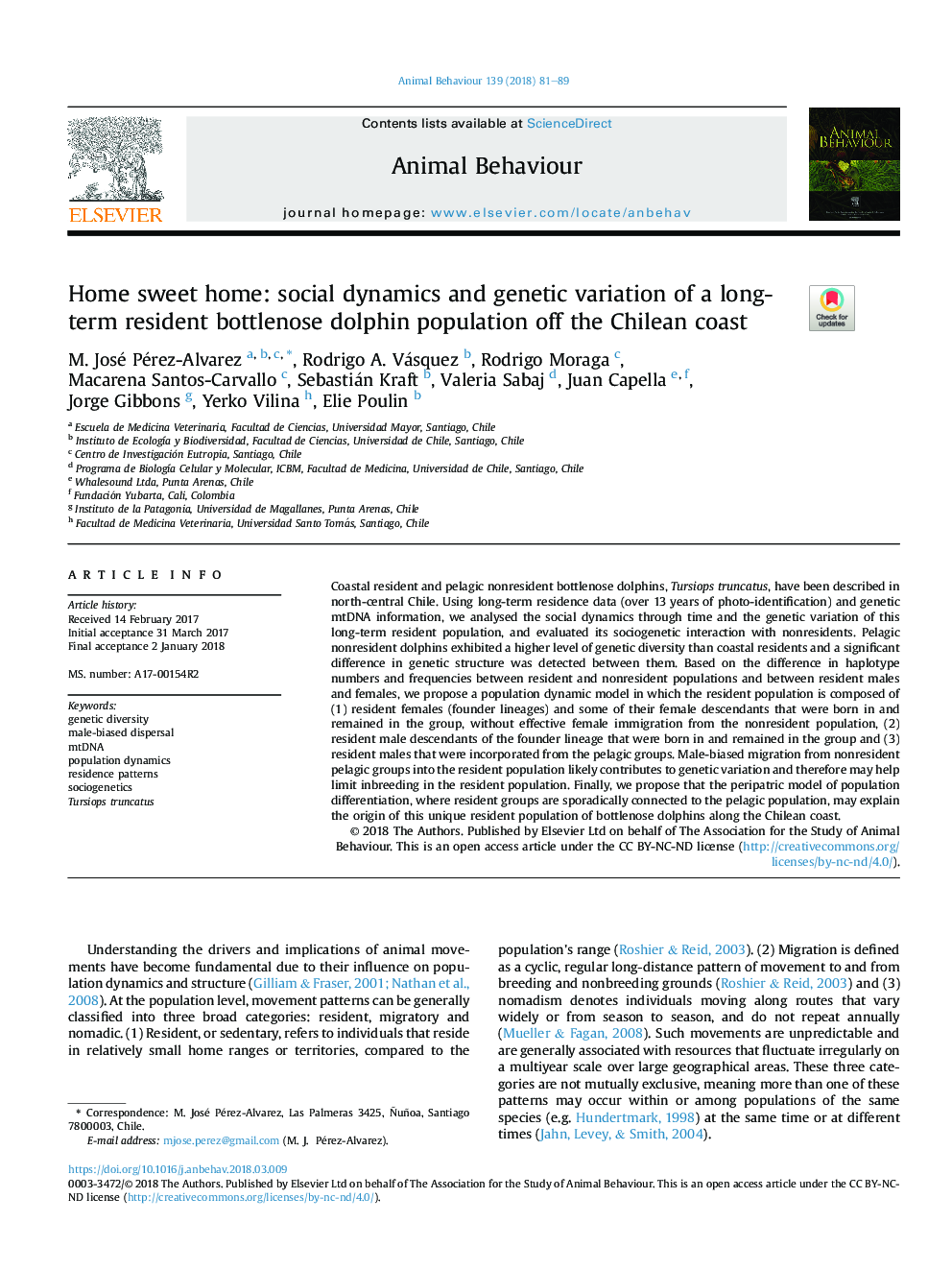| Article ID | Journal | Published Year | Pages | File Type |
|---|---|---|---|---|
| 8488561 | Animal Behaviour | 2018 | 9 Pages |
Abstract
Coastal resident and pelagic nonresident bottlenose dolphins, Tursiops truncatus, have been described in north-central Chile. Using long-term residence data (over 13 years of photo-identification) and genetic mtDNA information, we analysed the social dynamics through time and the genetic variation of this long-term resident population, and evaluated its sociogenetic interaction with nonresidents. Pelagic nonresident dolphins exhibited a higher level of genetic diversity than coastal residents and a significant difference in genetic structure was detected between them. Based on the difference in haplotype numbers and frequencies between resident and nonresident populations and between resident males and females, we propose a population dynamic model in which the resident population is composed of (1) resident females (founder lineages) and some of their female descendants that were born in and remained in the group, without effective female immigration from the nonresident population, (2) resident male descendants of the founder lineage that were born in and remained in the group and (3) resident males that were incorporated from the pelagic groups. Male-biased migration from nonresident pelagic groups into the resident population likely contributes to genetic variation and therefore may help limit inbreeding in the resident population. Finally, we propose that the peripatric model of population differentiation, where resident groups are sporadically connected to the pelagic population, may explain the origin of this unique resident population of bottlenose dolphins along the Chilean coast.
Related Topics
Life Sciences
Agricultural and Biological Sciences
Animal Science and Zoology
Authors
M. José Pérez-Alvarez, Rodrigo A. Vásquez, Rodrigo Moraga, Macarena Santos-Carvallo, Sebastián Kraft, Valeria Sabaj, Juan Capella, Jorge Gibbons, Yerko Vilina, Elie Poulin,
